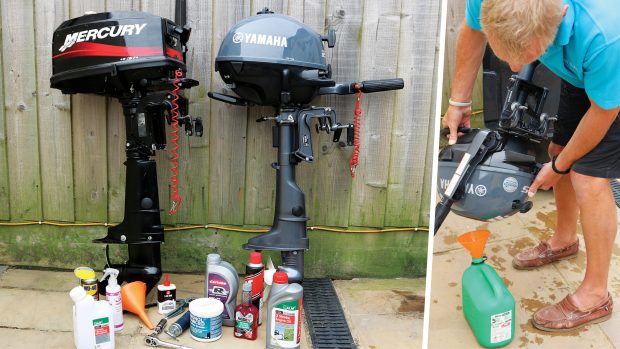Mercury takes the lead on safety by offering 1st Mate, its new factory-fit wireless kill cord system
Seven years after we launched Motor Boat & Yachting’s campaign to get boat and engine builders to develop a safer, more user-friendly kill cord, Mercury has become the first major engine manufacturer to respond to the challenge with its own factory fitted solution.
Called 1st Mate, it is a variation on the wireless kill cord idea pioneered by Coast Key and now offered by a number of other companies such as the OLAS Guardian and Fell MOB+ systems.
However, as well as Mercury 1st Mate being the only factory-fit option from a major engine builder, it also claims to offer a number of technical advantages over its aftermarket competitors.

The 1st Mate system comprises wearable fobs, a vessel hub and a linked smartphone app
In a bid to make this technology the new normal, it will also be offered as a retrofit device for other makes and models of engine.
Captain’s mate
So how does 1st Mate work and why does it differ from existing wireless kill cord systems? The first thing to know is that it consists of three main components: wearable fobs that the captain and/or crew clip to their clothing or wear on their wrist; a vessel hub that is fitted behind the helm console and links into its NMEA circuitry; and an app that you download to your smartphone.
Together they enable a greater degree of functionality and connectivity than a more basic wireless kill cord as well as a faster and more robust connection.
Article continues below…

OLAS Guardian tested: Can this wireless killcord and MOB alarm set you free?

CoastKey: Wireless kill cord promises to be a boating safety game changer
The primary kill cord function operates in much the same way as a conventional one, except that the fobs use a short-range wireless link to the hub rather than a physical cord. The moment this connection is lost, by the wearer falling into the water or moving too far away from the boat, the MOB alert is triggered.
Two different kinds of fob are available: a crew fob which sounds the alert and marks the spot where they fell overboard; and a captain’s fob that also kills the engines and stops the boat.
Where it differs from some of the other wireless devices is that instead of a simple Bluetooth connection, it uses WiMEA technology (Wireless Marine Electronics Algorithm).

Information is relayed to the app and then sent on to emergency contacts if there’s nobody left on board to cancel it
This operates across several frequency channels and uses a 4G antenna for a more secure link that claims to reduce the risk of interference from other electronics or physical objects that could block the signal and inadvertently kill the engine(s). It also gives a faster response time of just 0.8sec from the moment the signal is lost to the moment the engine is stopped.
Because it is linked to the boat’s NMEA network of navigation equipment it can also display alerts on any connected chartplotter or MFD and take advantage of all the information they supply.
This enables it to give an exact GPS location of where the wearer fell overboard, prompt remaining crew members how to get back to that spot and log other information such as the time, speed, heading, temperature and acceleration at the time of the accident.

The main hub can be installed out of sight
All of this is also relayed on the app to any connected smartphones and after a countdown delay (giving anyone left on board a chance to cancel the alert) sent in the form of a distress message to the user’s preset emergency contacts.
Anti-theft
The other big advantage is that it also acts as an effective anti-theft device. Mercury engines fitted with SmartCraft technology can’t be started without an unlock command first being sent from either the captain’s fob or their associated app.
The beauty of being able to do this via an app is that the owner can lock or unlock the engines even when they are hundreds of miles away, giving access to engineers or friends who may need temporary use of the boat, and then virtually locking it again afterwards.

You can unlock the engines using the fob or your phone app
If the engines are removed from the boat, they will also require a virtual handshake from the system before restarting. The fob’s batteries have an estimated life of 100 hours before they are likely to need changing but because the hub is linked into the boat’s Canbus system, the engines can still be started if the fob’s battery gives out.
Plug and play connections make it easy for DIY or dealer installation, while over-the-air software updates and diagnostics are possible via the app. However, some owners might be wary of the system’s blackbox style recorder, which monitors up to nine different parameters such as speed, acceleration, location and heading and automatically relays them to Mercury via the app in the event of an accident.
Despite Mercury’s confidence in its new system, it is still supplying all its outboard engines with a physical kill cord and advising that 1st Mate is used in addition to this rather than as a replacement for it. Nor is it fitting 1st Mate as standard to any of its engines, preferring instead to market it as an optional extra.
A single engine kit with one captain’s fob is currently priced at €599 inc VAT with additional passenger fobs for €80 each. The system can handle up to six Mercury engines and eight fobs.
First published in the August 2020 edition of Motor Boat & Yachting.









